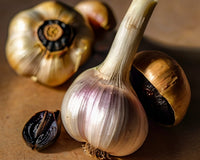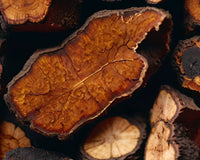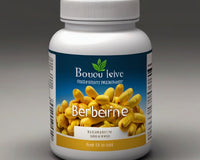What is xanthan gum?

Xanthan gum is a popular food additive that is often added to foods as a thickener or stabilizer. It is produced by the fermentation of sugar by a bacteria called Xanthomonas campestris. When sugar ferments, it produces a broth or similar thick substance that is made solid by the addition of alcohol. It is then dried and turned into powder. When xanthan gum powder is added to a liquid, it disperses quickly and forms a viscous and stable solution. This makes it an excellent thickener, suspending agent and stabilizer for many products. It was discovered by scientists in 1963. Since then, it has been well studied and determined to be safe. Therefore, the FDA has approved its use as a food additive and there are no limits on the amount of xanthan gum that can be included in foods. Although it is made in a laboratory, it is a soluble fiber. Soluble fiber is carbohydrate that the body cannot break down. Instead, they absorb water and turn into a gel-like substance in your digestive system, slowing digestion. Therefore, your body cannot digest xanthan gum and it does not provide any calories or nutrients.
Where is xanthan gum found?
Xanthan gum is found in foods, personal care products and industrial products.
Food products

Xanthan gum can improve the texture, consistency, flavor, shelf life and appearance of many foods.
It can also stabilize food, helping certain foods withstand different temperatures and pH levels. Additionally, it prevents foods from separating and allows them to drain smoothly from the container.
It is often used in gluten-free cooking because it provides the elasticity and fluffiness that gluten imparts to traditional baked goods.
Here are some common foods that contain xanthan gum:
- Salad Dressing
- Baked Goods
- Fruit Juice
- Soup
- Ice cream
- Sauce and Gravy
- Syrup
- Gluten-free products
- Low-fat foods
Personal care products

Xanthan gum is also found in many personal care and beauty products. It thickens these products but still flows easily from the container. It also allows solid particles to be suspended in liquids.
Here are some common products containing xanthan gum:
- Toothpaste
- Facial Cream
- Lotion
- Shampoo
Industrial products

Xanthan gum is used in many industrial products because of its ability to withstand varying temperatures and pH values, adhere to surfaces and thicken liquids while maintaining good flow properties.
Common industrial products containing xanthan gum include:
- Fungicides, Herbicides and Insecticides
- Tile, grout, oven and toilet cleaner
- Paint
- Fluids used in oil drilling
- Adhesives such as wallpaper glue
Xanthan gum can lower blood sugar
Multiple studies have found that consuming large doses of xanthan gum can lower blood sugar. It is believed to turn the fluid in the stomach and small intestine into a viscous gel-like substance. This slows digestion and affects how quickly sugar enters the bloodstream, lowering blood sugar spikes after eating. A 12-week study had nine men with diabetes and four men without diabetes eat one muffin a day. During the six-week study, the men ate muffins without xanthan gum. For the next 6 weeks, they ate muffins containing 12 g of muffins. The participants' blood sugar was tested regularly, and the men with diabetes experienced significant reductions in fasting and post-meal blood sugar levels when eating waffles containing xanthan gum. Another study of 11 women found that eating rice with added xanthan gum resulted in significantly lower blood sugar than rice without xanthan gum.
Xanthan gum can cause digestive problems
For most people, the only potential negative side effect of xanthan gum appears to be stomach upset. Many animal studies have found that large doses can increase stool frequency and cause soft stools. In human studies, large doses of xanthan gum were found to have the following effects:
- Increased bowel movement
- Increased bowel movements
- Soft stool
- Increased gas
- Changing gut bacteria
These side effects do not appear to occur unless at least 15 grams are consumed. This amount is difficult to achieve with a typical diet. Additionally, xanthan gum's ability to alter gut bacteria may be a good thing, as many other soluble fibers alter gut bacteria.
Some people may want to avoid it
While xanthan gum is safe for most people, there are a few people who should avoid using it.
People with severe allergies to wheat, corn, soy or dairy products
Xanthan gum is derived from sugar. Sugar can come from many different places, including wheat, corn, soy, and dairy. People with severe allergies to these products may need to avoid foods containing xanthan gum unless they can identify the source of the gum.
Premature infants
Simply Thick is a xanthan gum-based thickener that is added to formula and breast milk for premature infants. In some cases, babies develop necrotizing enterocolitis, a life-threatening disease that causes the intestines to become inflamed, damaged, and begin to die. While Simply Thick is safe for use on adults, it should be avoided on babies because their internal organs are still developing.
People taking certain medications or planning surgery
Xanthan gum can lower blood sugar levels. This can be dangerous for people taking certain diabetes medications that can cause hypoglycemia. It can also be dangerous for people who plan to have surgery soon. These people can eat some foods containing xanthan gum, but they should avoid eating large amounts until the effects of xanthan gum on blood sugar are better understood.
Is it safe to eat?
For most people, eating foods containing xanthan gum appears to be completely safe. Although it is found in many foods, it only accounts for 0.05-0.3% of foods. Additionally, an average person consumes less than 1 gram of xanthan gum per day. Proven to be 20 times safer. In fact, the Joint Expert Committee on Food Additives assigns it an acceptable daily intake of "not specified." This name is given when a food additive has very low toxicity and is present in food in such small quantities that it does not pose a health hazard. But people should avoid inhaling xanthan gum. Workers who handled it in powder form were found to have flu-like symptoms and nose and throat irritations. So even though you might eat a lot of foods that contain it, your intake is so small that you're unlikely to experience benefits or negative effects.
Summary
Xanthan gum is a commonly used thickening, suspending and stabilizing additive. It is found in many foods and products and appears to be safe for most people. When consumed in large amounts, it may even have health benefits, although these higher intakes can also increase the risk of digestive problems. Importantly, higher intakes are difficult to achieve through a regular diet and may have to be achieved through the use of xanthan gum supplements. While many studies have demonstrated the safety of xanthan gum in food, there are few human studies using it as a supplement. In the meantime, it is safe to eat foods containing xanthan gum. At worst, it seems harmless.





